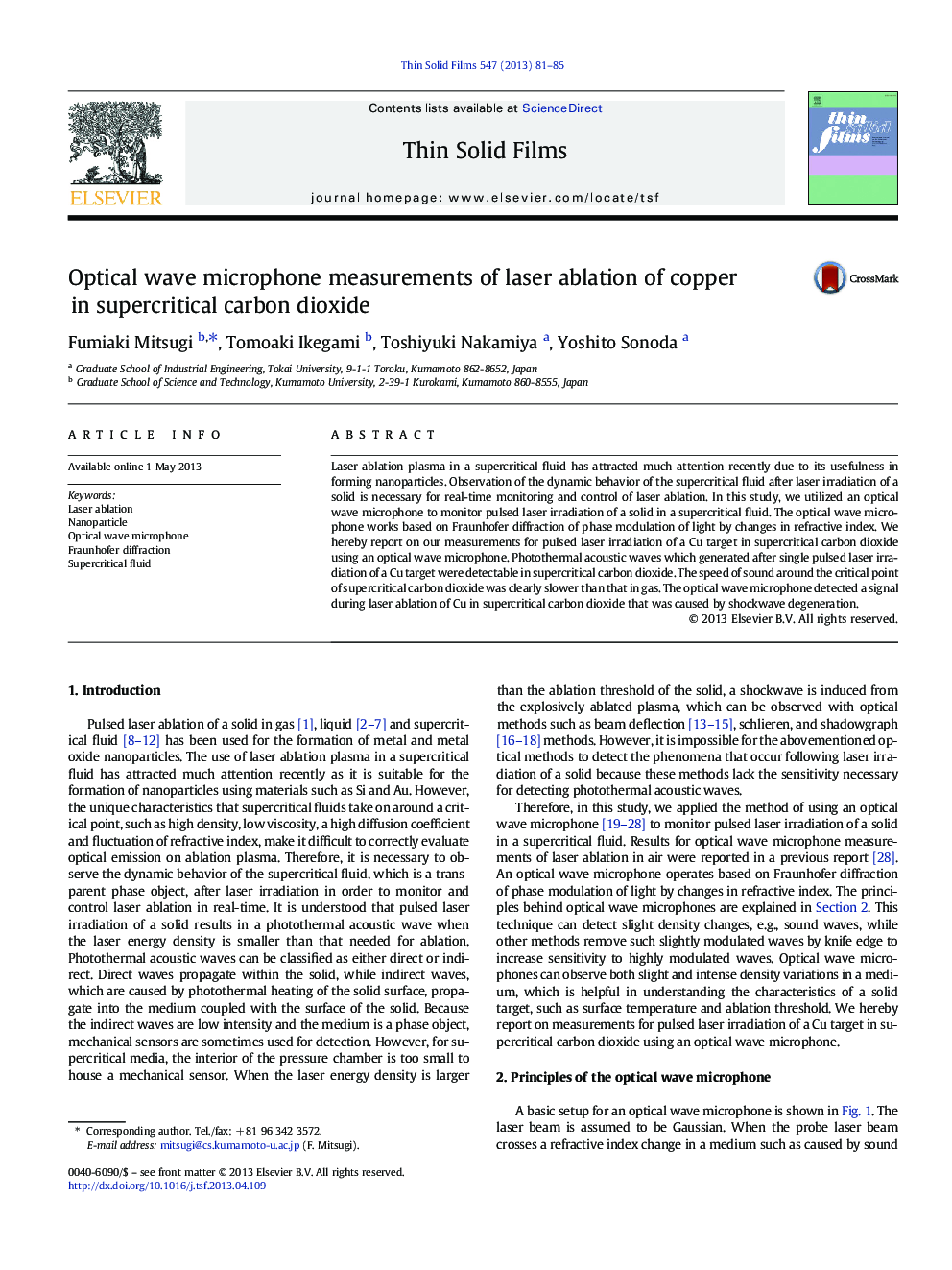| Article ID | Journal | Published Year | Pages | File Type |
|---|---|---|---|---|
| 1665893 | Thin Solid Films | 2013 | 5 Pages |
•Photothermal acoustic wave in supercritical fluid was observed.•Sound speed around the critical point was slower than that in gas.•Optical wave microphone detected degeneration of a shockwave.•Ablation threshold of a solid in supercritical fluid can be estimated.•Generation of the second shockwave in supercritical phase was suggested.
Laser ablation plasma in a supercritical fluid has attracted much attention recently due to its usefulness in forming nanoparticles. Observation of the dynamic behavior of the supercritical fluid after laser irradiation of a solid is necessary for real-time monitoring and control of laser ablation. In this study, we utilized an optical wave microphone to monitor pulsed laser irradiation of a solid in a supercritical fluid. The optical wave microphone works based on Fraunhofer diffraction of phase modulation of light by changes in refractive index. We hereby report on our measurements for pulsed laser irradiation of a Cu target in supercritical carbon dioxide using an optical wave microphone. Photothermal acoustic waves which generated after single pulsed laser irradiation of a Cu target were detectable in supercritical carbon dioxide. The speed of sound around the critical point of supercritical carbon dioxide was clearly slower than that in gas. The optical wave microphone detected a signal during laser ablation of Cu in supercritical carbon dioxide that was caused by shockwave degeneration.
